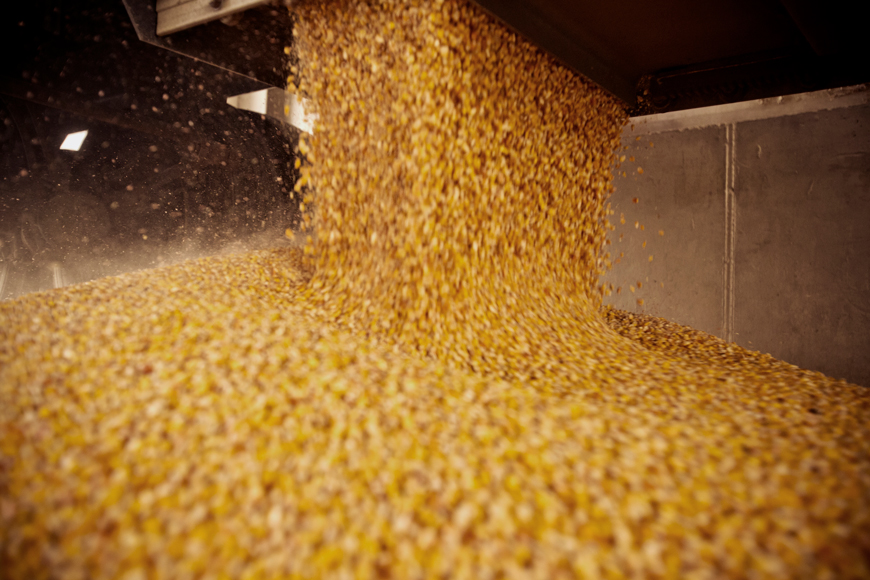Enhance Your Variable-Rate Fertility on Wheat

Are you looking to boost the yield and ROI potential of your wheat crop? If so, more intense, targeted nutrient management in areas where it will be most effective could help you push your crop to the next level of bushels per acre and protein content. Here are some tips to help you optimize fertility in your fields.
1. Start with a soil sample.
Zone soil sampling can give you valuable information about nutrient variability in your wheat fields and, depending on your region, can be more cost-effective than grid sampling. Talk with your local trusted advisor about getting soil samples now prior to freeze-up and snow cover.
2. Choose the right varieties.
Ask your advisor how the Characterization Charts (CHT Tool) function of the R7® Tool can help you choose the wheat varieties that will best meet your production goals. High management on varieties with high response-to-population, response-to-nitrogen and response-to-fungicide scores can help you boost both yield and quality potential at harvest. If you do choose a high-management variety, work with your agronomist to time input applications appropriately.
3. Manage by zones.
Establishing yield goals by zones is critical to help determine how much fertility you need to apply in each area. Work with your advisor next season to use satellite imagery, prior year crop removal and past yield results to set yield goals for each management zone on your operation with the R7 Tool.
4. Pay attention to nitrogen and sulfur.
These macronutrients play important roles in wheat development and in quality and protein content at the end of the season. If your nitrogen-to-sulfur ratios are optimal late in the season, you have a better chance of achieving the protein and quality levels you desire. A number of farmers use variable-rate split nitrogen, which is an application of nitrogen at the beginning of the season, with another at flag leaf or post-flowering for a protein boost.
5. Look at the data.
In 2015, 2016 and 2017, my colleagues and I performed side-by-side variable-rate and static-rate checks on farms in western North Dakota and eastern Montana where variable-rate fertility applications were being performed on wheat for the first time. These were not scientific trials and there was no attempt to replicate the trials. The objective was to give farmers some perspective on how variable-rate fertility applications could potentially impact yield in their fields.
As we compiled yield data from the trials, we found crops that received variable-rate treatments outyielded the static strip by an average of nearly 4 bushels per acre.*
Selecting the right varieties, getting population right, doing variable-rate nutrient applications, and using technology to detect disease and weed pressures can help you give your wheat crop the level of management it deserves. And help you reach the goals you want to achieve.
* Source: 2015–2017 customer field trials (52 locations in Montana and North Dakota). Because of factors outside of WinField United's control, such as weather, applicator factors, etc., results to be obtained, including but not limited to yields, financial performance, or profits, cannot be predicted or guaranteed by WinField United. Actual results may vary.
© 2018 WinField United. R7® and WinField® are trademarks of WinField United.
1. Start with a soil sample.
Zone soil sampling can give you valuable information about nutrient variability in your wheat fields and, depending on your region, can be more cost-effective than grid sampling. Talk with your local trusted advisor about getting soil samples now prior to freeze-up and snow cover.
2. Choose the right varieties.
Ask your advisor how the Characterization Charts (CHT Tool) function of the R7® Tool can help you choose the wheat varieties that will best meet your production goals. High management on varieties with high response-to-population, response-to-nitrogen and response-to-fungicide scores can help you boost both yield and quality potential at harvest. If you do choose a high-management variety, work with your agronomist to time input applications appropriately.
3. Manage by zones.
Establishing yield goals by zones is critical to help determine how much fertility you need to apply in each area. Work with your advisor next season to use satellite imagery, prior year crop removal and past yield results to set yield goals for each management zone on your operation with the R7 Tool.
4. Pay attention to nitrogen and sulfur.
These macronutrients play important roles in wheat development and in quality and protein content at the end of the season. If your nitrogen-to-sulfur ratios are optimal late in the season, you have a better chance of achieving the protein and quality levels you desire. A number of farmers use variable-rate split nitrogen, which is an application of nitrogen at the beginning of the season, with another at flag leaf or post-flowering for a protein boost.
5. Look at the data.
In 2015, 2016 and 2017, my colleagues and I performed side-by-side variable-rate and static-rate checks on farms in western North Dakota and eastern Montana where variable-rate fertility applications were being performed on wheat for the first time. These were not scientific trials and there was no attempt to replicate the trials. The objective was to give farmers some perspective on how variable-rate fertility applications could potentially impact yield in their fields.
As we compiled yield data from the trials, we found crops that received variable-rate treatments outyielded the static strip by an average of nearly 4 bushels per acre.*
Selecting the right varieties, getting population right, doing variable-rate nutrient applications, and using technology to detect disease and weed pressures can help you give your wheat crop the level of management it deserves. And help you reach the goals you want to achieve.
* Source: 2015–2017 customer field trials (52 locations in Montana and North Dakota). Because of factors outside of WinField United's control, such as weather, applicator factors, etc., results to be obtained, including but not limited to yields, financial performance, or profits, cannot be predicted or guaranteed by WinField United. Actual results may vary.
© 2018 WinField United. R7® and WinField® are trademarks of WinField United.





